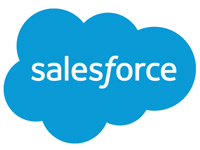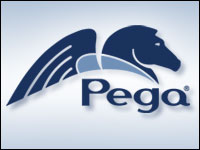
For several years now, Salesforce has built distinct product lines that all work off the same platform and can integrate in interesting ways. There are product lines for the enterprise, small and mid-sized businesses (SMBs), business-to-business (B2B) firms and business-to-consumer (B2C) operations — and probably some others that I haven’t considered. For instance, the AppExchange contains a wealth of apps for very specialized types of front-office business, as well as some back-office apps, like accounting.
We’ve recently seen product announcements for account-based marketing (ABM), partner relationship management (PRM), e-commerce, and a variety of analytics implementations. While supplying its core customer relationship management market, Salesforce also has been evolving as a provider of more generic products and tools that any business can use to develop unique solutions to its business processes.
The rationale for all of these new products is simple. Salesforce has advised my financial analyst friends that it is on track to generate more than US$10 billion in revenue from its SaaS business in its current fiscal year. That’s $10 billion of recurring revenue, which is quite an accomplishment. However, in doing this, the company bumps up against the same constraints that conventional companies encounter.
Broadening the Footprint
All companies need to extend product lines and attract ever-larger populations of customers. A conventional company brings out a lower-cost product for downstream markets that are more price sensitive, along with higher-priced solutions for customers who might require more handholding or glitz.
Product companies do it with form factors, features and even colors. If you’re a Software as a Service company, though, many of those avenues are blocked by the very democratization of the product that made subscriptions so appealing in the first place. Subscription products come pretty much in one flavor — there’s no B-grade.
That leaves other approaches to broadening the footprint that often are more useful than common line extensions. That’s one reason Salesforce continues to add specificity to its solution set. For instance, at one point not too long ago, it was enough to offer tools for building websites running on the platform.
Today, a website isn’t enough. The site has to be able to take an order and offer multiple ways to deliver products and services, up to and including connecting the brick-and-mortar store with the site and the catalog, AND connect to the billing system. That’s e-commerce in a nutshell.
Similarly, vanilla CRM once was enough to excite anyone carrying a bag and trying to ride herd on a lot of customer data — but no more. As the indirect channel shows, selling is multilevel, and the tools needed by original equipment manufacturers to sell and service distributors are qualitatively different from the tools used in direct sales by the channel associated with a distributor.
Nonetheless, everybody wants a view into the data so that each can better manage its part of the universe. So it becomes essential for CRM to inform PRM of field activity, just as it’s important for PRM to inform the field about features, functions and special opportunities. In between, the OEMs need to deal with distributors over market development funds, deal registration, discounts and commissions. The result is the modern PRM-CRM hookup.
Account-Based Marketing
Of course, that’s not all. Selling and servicing end customers is qualitatively different from servicing business customers, which is not unlike an indirect channel set-up — but the business processes are totally different.
In a B2B setting, one company might serve as a component supplier to another, and the indirect channel aspects of the relationship may be completely lacking. If you sell components like electric motors, plumbing fittings or chemical reagents, your customer isn’t so much adding value to your stuff (as in an indirect channel) as it is simply outsourcing a part of its business process that could, if needed, be done in-house.
Your job is to do the work better, faster, with fewer errors — and of course, cheaper. Into this milieu, Salesforce last week introduced enhanced account-based marketing.
If you are marketing to enterprises, you might gear up for a long sales cycle with a purchase decision by committee. If you’re selling to end consumers, just the opposite might be true. You might need to tightly script the customer journey — decisions can be made in a flash, and one mistake can cost you the business.
Consequently, there’s a raft of what at first might seem like overlapping marketing apps, but when you begin to tease apart the target business processes, you realize one tool set is more appropriate than another. It’s the difference between marketing and account-based marketing.
Chaos Reduction
We haven’t even looked at how developers for all of these different approaches to markets deal with modifying the underlying apps — but there’s a whole story there too. While the technology might be the same under the skins, there’s still a lot of process understanding to be done before it all makes sense.
Of course, Salesforce Trailhead is there to help with self-paced training — and with more than 100 badges to earn, there’s a lot of differentiation to consider.
So it goes. Salesforce is not the only vendor doing all of this, but it seems like the one most oriented to dealing with end-to-end process automation in a variety of instances. As I said at the beginning, it has had to find ways to increase the addressable market, and it has. The result has been more order and less chaos, which you sometimes can find in an extended product set. Good enough.


























































Social CRM
See all Social CRM